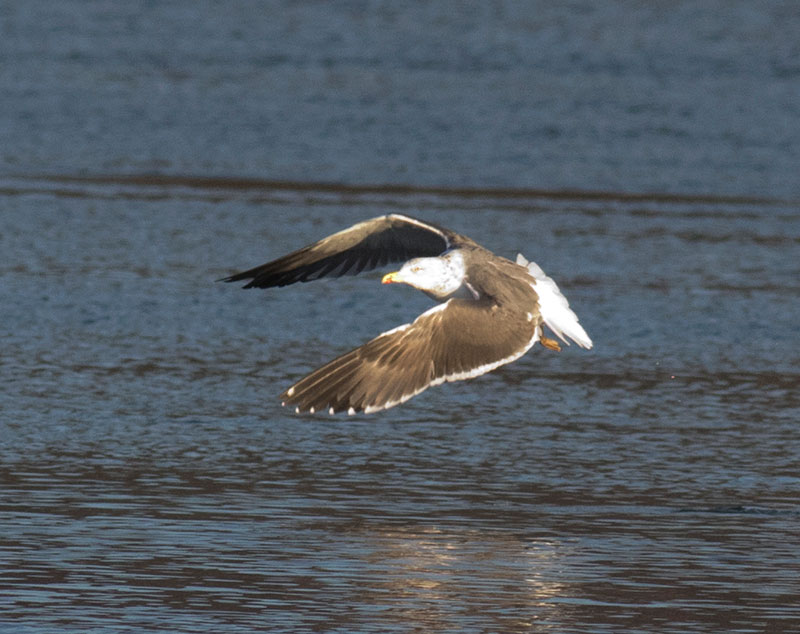Finding Uncommon Gulls Locally
3/18/18
By David Brown
Every year in late winter large groups of gulls migrate through our region. Most of these are ring-billed gulls. This is the species you may see gathering at parking lots. They have yellow legs and yellow bills with a black ring. Their wings are light gray. It is common for a few herring gulls to be mixed in with these flocks as well. Herring gulls are noticeably larger than ring-billed gulls and have pink legs and larger bills with a red dot. Most gulls take 3 to 4 years to attain adult plumage. Immature gulls are a messy mix of gray and brown whereas adults are cleaner looking.
One common technique in birding is to look through large flocks of common species to check for rare species. In March, thousands of gulls gather at the Williamsport dam at dusk. On March 11th, a lesser black-backed gull was with the other gulls. This species is from the Atlantic coast of Europe but has become increasingly common in eastern North America over the past few decades. Lesser black-backed gulls are larger than ring-billed gulls but smaller than herring gulls. They stand out because their wings are much darker. The species was first documented in Lycoming County in 2015 and a half-dozen have been seen since then.

Lesser Black-backed Gull
Another gull species to watch for is the Bonaparte’s gull. These are much smaller than our other gulls and are only seen during a short migration period that peaks in early April.
Gulls are often colloquially referred to as “seagulls” but most birders avoid using this term. Eighteen species of gulls have been recorded in Pennsylvania. Nine species have been documented in Lycoming County. The best places in Lycoming County to watch gulls are the Williamsport dam and Rose Valley Lake. February through April are the peak months to see them. Gulls do not nest in Lycoming County but sometimes ring-billed gulls are seen throughout the summer. Gulls are often overlooked because they present a difficult identification challenge. Through careful observation you can learn to appreciate the individual variation and the differences between the species.